Exploring the Rich Tapestry of Kashmiri Men's Traditional Dress
The stunningly beautiful Himalayan region of Kashmir has a rich cultural legacy that is represented in its traditional dress. The traditional attire of Kashmiri males is equally remarkable, a monument to the region's distinct history and creativity, even though the region's women's apparel frequently garners more attention. The many elements, regional differences, and cultural importance weaved into each thread of Kashmiri men's traditional attire are all covered in detail in this article.
The fundamental component of a Kashmiri man's traditional attire is a well-balanced combination of practicality, comfort, and style that is made to endure the region's varied climate. The Pheran, a long, loose-fitting tunic that is usually made of cotton or wool depending on the season, is the most noticeable item of clothing. While lighter cotton variants give comfort and breathability in the summer, Pheran's thick, toasty wool offers vital protection against the bitter cold in the winter. The Pheran's wide cut makes it easy to travel, which is crucial for negotiating the area's frequently difficult terrain.
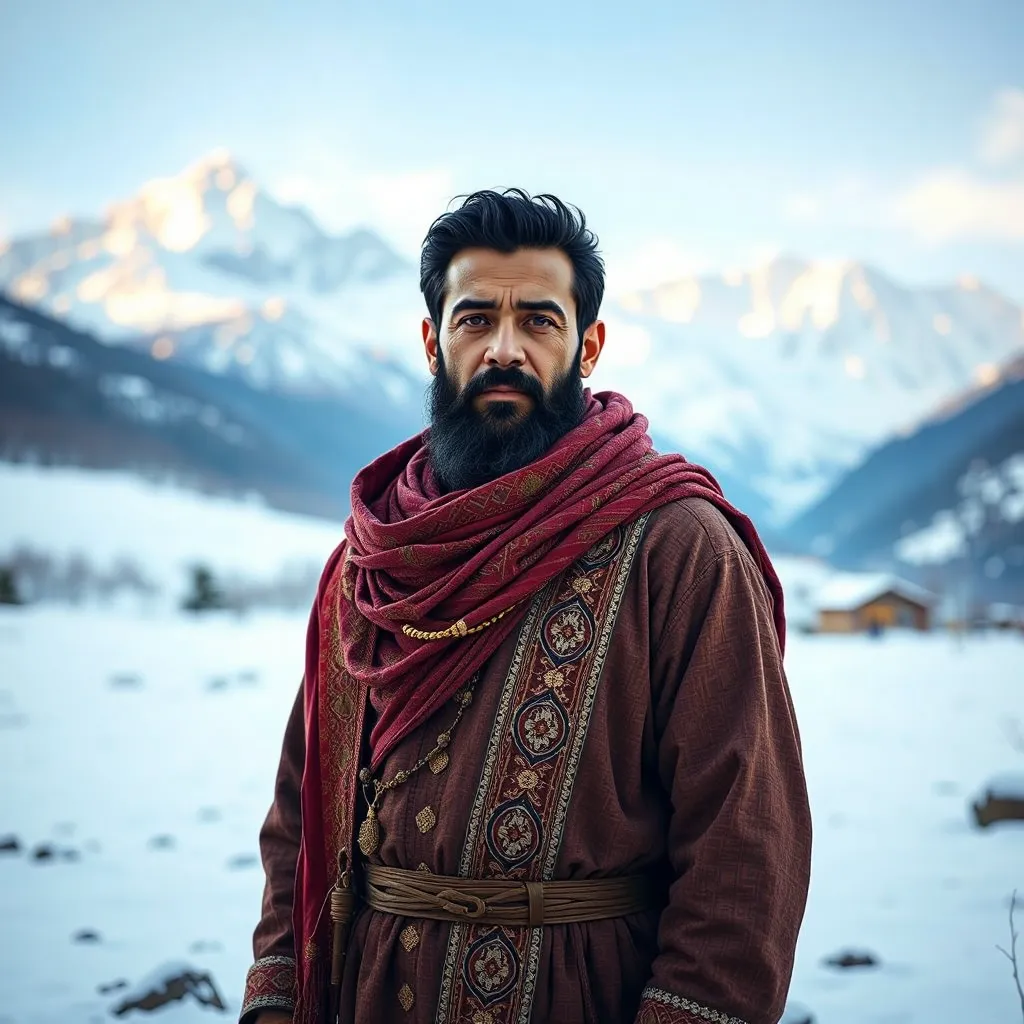
The Pheran's design has a round, high neck that is frequently embellished with elaborate embroidery. These decorations, which are usually made in vivid hues and traditional Kashmiri designs, differ according to the wearer's social standing and place of origin. Sometimes gathered at the wrists, the sleeves are broad and lengthy. The Pheran's length typically reaches the ankles, offering plenty of warmth and protection. A Pheran frequently has an ornate border around the hem, which adds even more visual depth.
Men typically dress in loose-fitting pants known as Suthan beneath the Pheran. These are just as comfy and useful as the Pheran and are usually constructed of the same material. In order to prevent impeding movement, the Suthan are frequently gathered at the ankles. To stay warm and protected from the weather during the colder months, more layers of clothes may be worn underneath.
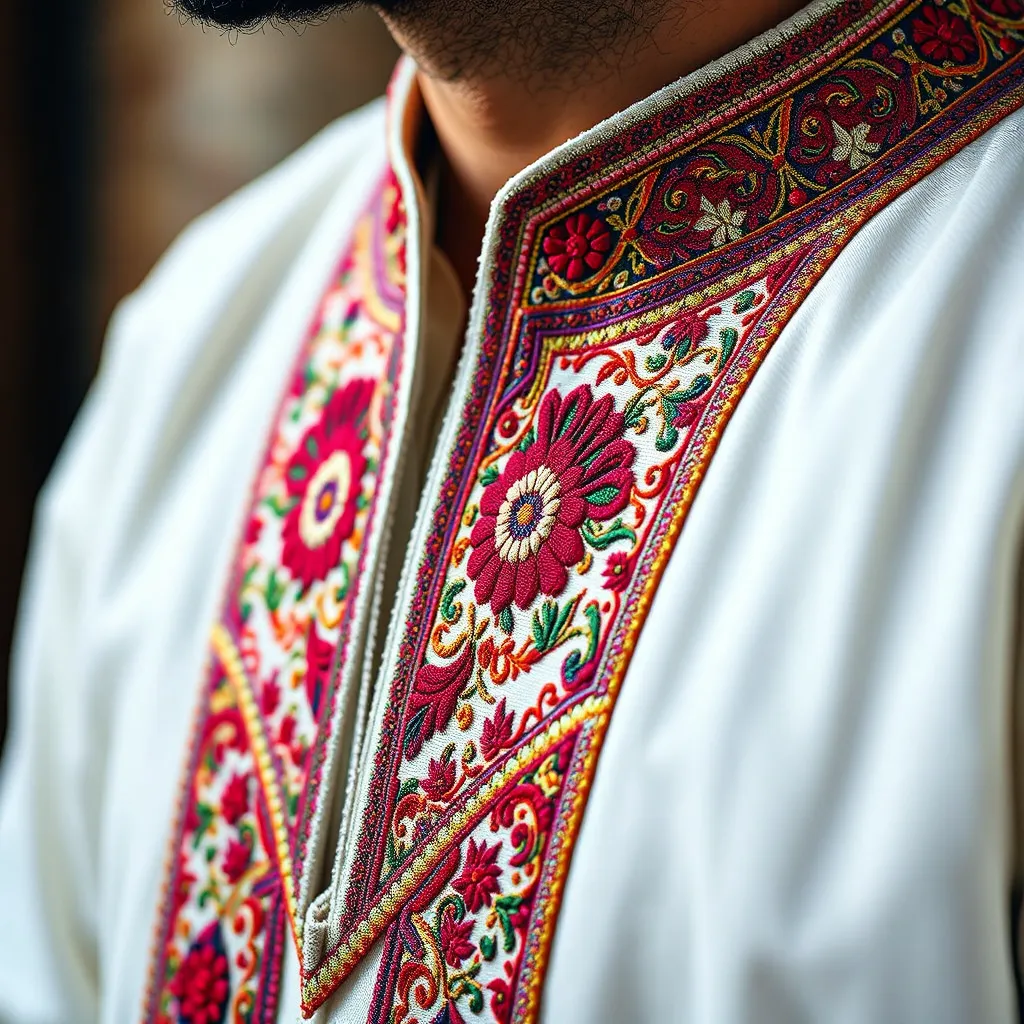
The headgear differs significantly according on the location and event. The Kullu cap, a soft, spherical cap typically composed of silk or wool, is a popular option. This cap provides sun and cold protection and is both fashionable and functional. Other head coverings include turbans, which can represent different social groupings or affiliations and come in a variety of colors and materials. The selection of headgear frequently reflects regional traditions and individual taste.
Equally important is footwear, with leather boots or shoes being a common choice for traditional Kashmiri men. These are often comfy and strong, made to survive the frequently rough terrain. The season and the wearer's line of work might affect the footwear's design and composition. While more ornate footwear may be preferred in urban settings, basic leather sandals may be more prevalent in rural communities.
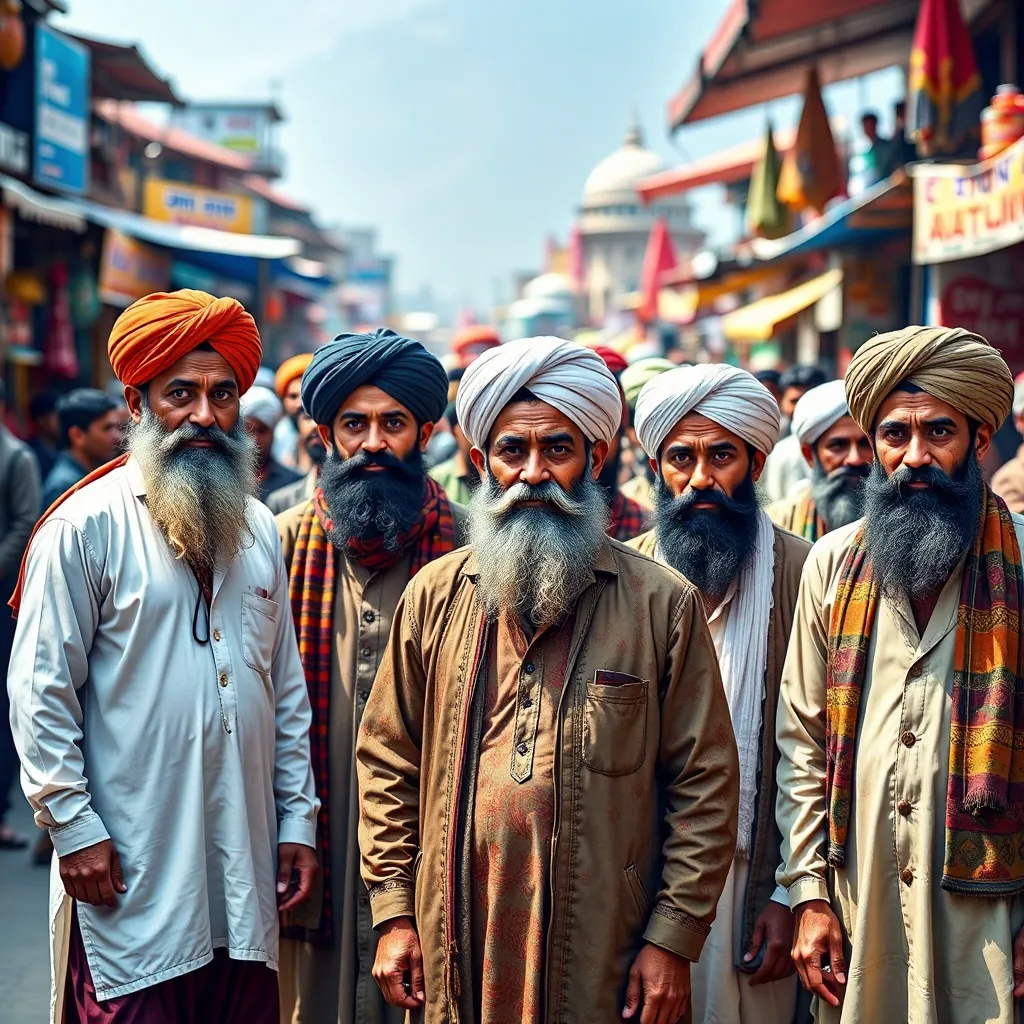
Regional Variations:
The Pheran and other aspects of traditional attire might be varied in style depending on where in Kashmir you are. The distinct cultural customs and environmental circumstances of particular regions are frequently reflected in these variances. For instance, the colors, embroidered designs, and even the Pheran's cut may vary slightly amongst valleys. These minor variations fascinatingly reveal the region's varied origins and contribute to the complex fabric of Kashmiri culture.
Modern Adaptations:
Even while traditional Kashmiri men's attire is still very important to the culture, contemporary variations have appeared. Younger generations frequently combine modern and traditional aspects to create a distinctive combination of the two. This could entail repurposing historic designs, adding Western-inspired components to the ensemble, or using contemporary textiles. The fundamental characteristics of the Pheran and Suthan, however, frequently endure and provide a link to their ancestry.
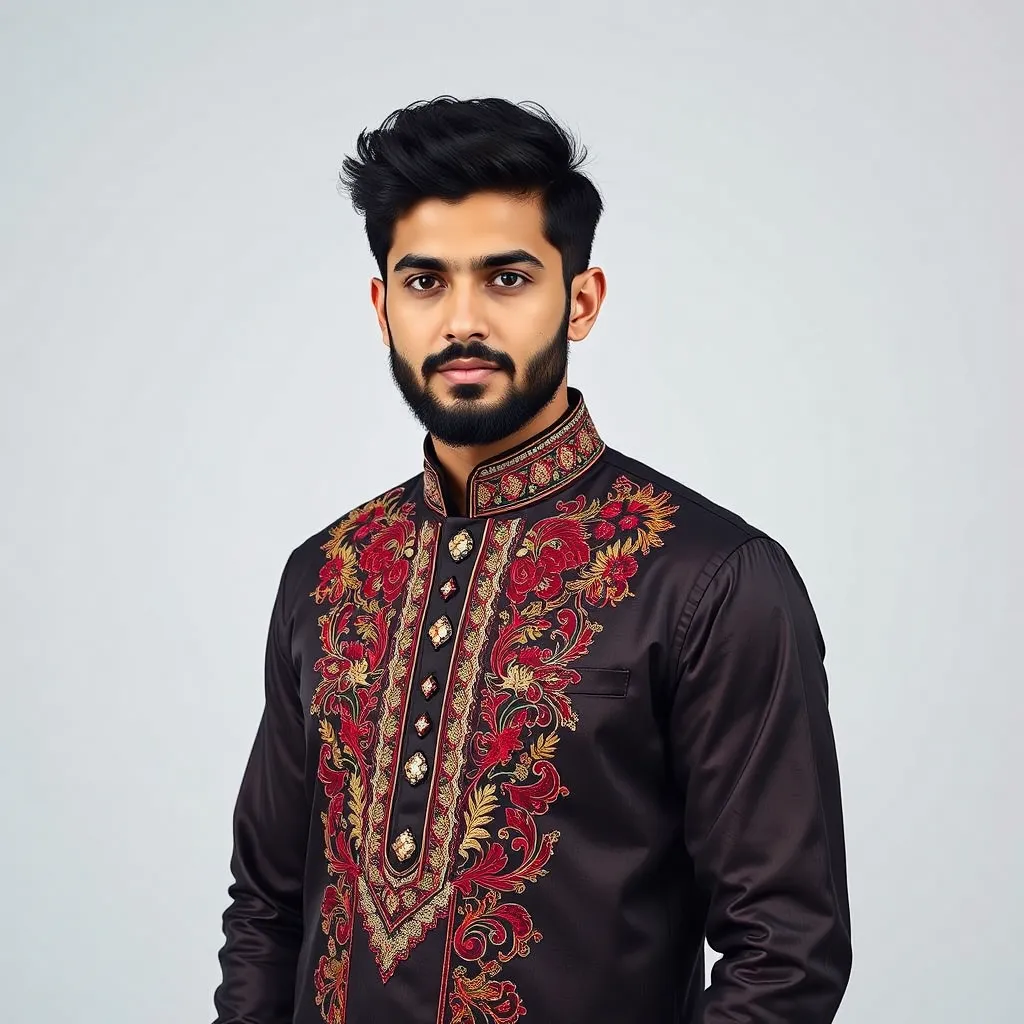
The Cultural Significance:
Traditional Kashmiri men's attire is a potent sign of pride and cultural identity that goes far beyond simple apparel. The elaborate needlework, particular cuts of the clothing, and material selection all reveal a great deal about the wearer's upbringing, social standing, and place of origin. The attire is essential to maintaining and passing down cultural legacy to future generations. Honoring one's forefathers and establishing a connection with Kashmir's rich past can be achieved by dressing traditionally.
Despite the influence of contemporary fashion trends, the Pheran's continued appeal attests to its profound cultural value. It still serves as a physical reminder of Kashmir's rich history, a symbol of Kashmiri identity, and evidence of the traditions' ongoing power. The art of Kashmiri dress is preserved and flourishes because of the painstaking craftsmanship that goes into making these garments, which has been handed down through the years.
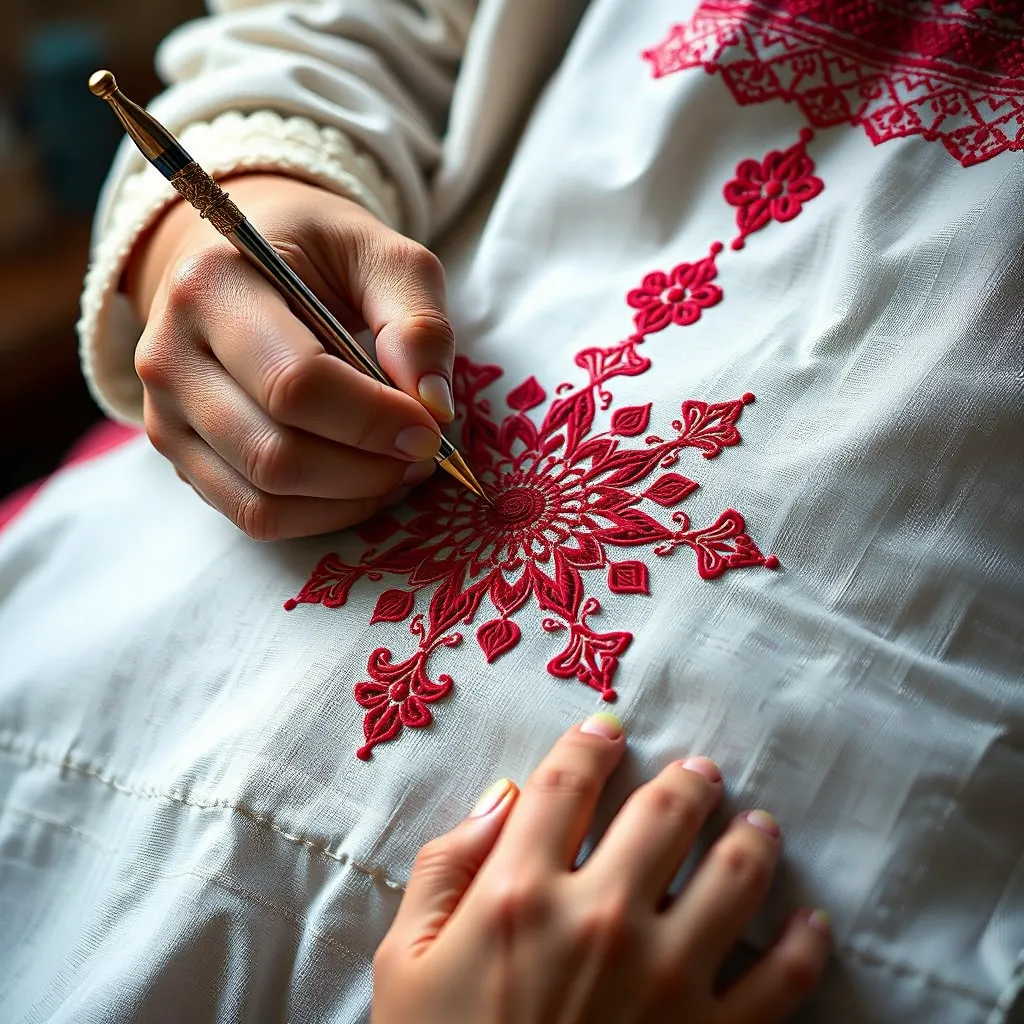
Beyond the Clothes:
In order to comprehend the traditional attire of Kashmiri males, one must look beyond the clothing. Understanding the social and cultural setting in which these garments are worn is essential. Stories are frequently told by the elaborate embroidery, which reflects regional myths, values, and creative customs. Different social groups or connections can also be represented by the colors and patterns chosen. As a result, learning about the traditional clothing worn by Kashmiri males helps one better comprehend the region's rich cultural legacy and intricate social structure.
For the region's cultural identity to be preserved, traditional Kashmiri attire must be preserved. Supporting regional craftspeople, promoting traditional skills, and teaching the next generation the value of these garments are all essential to preserving this priceless aspect of Kashmir's history. By recognizing and respecting the beauty and cultural significance of traditional Kashmiri men's attire, we may help preserve this distinctive and lively facet of Kashmiri culture.
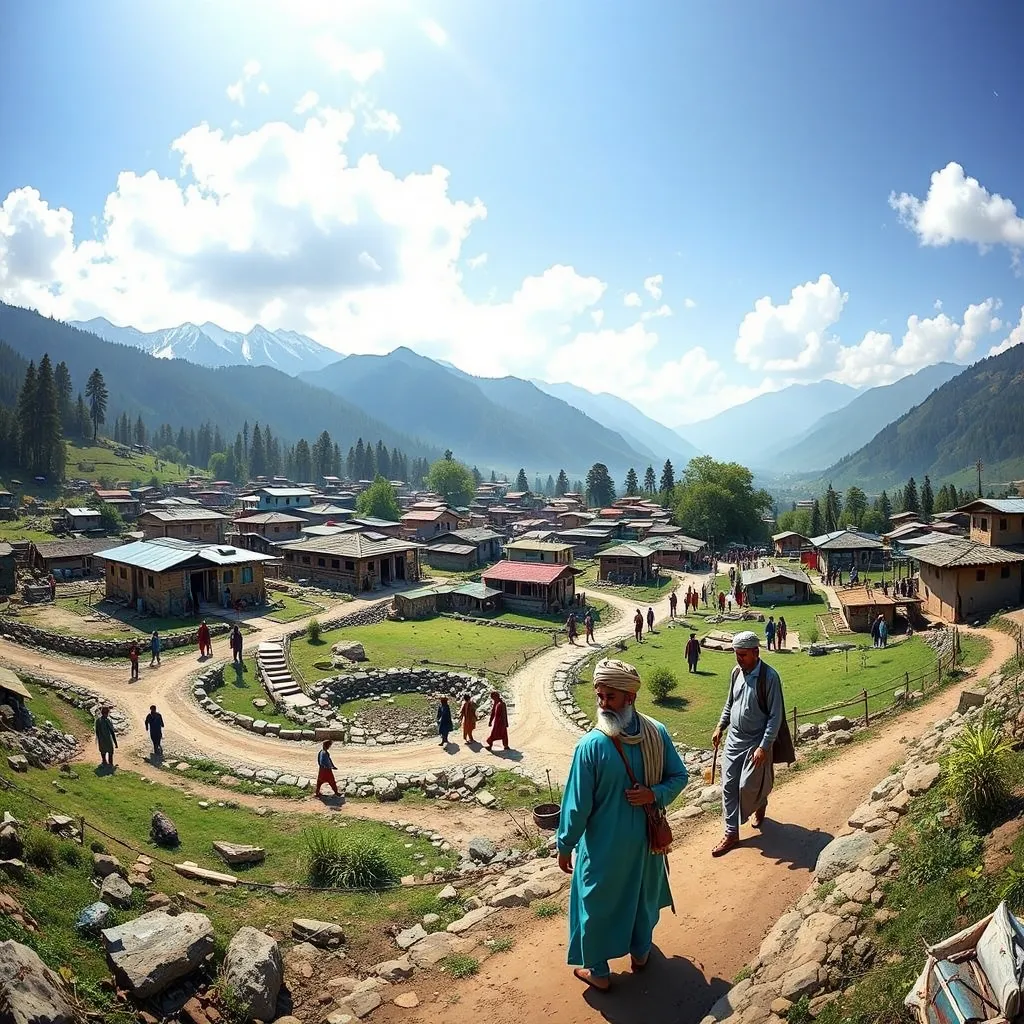
FAQ: Kashmiri Men's Traditional Dress
Q: What is the most important garment in a Kashmiri man's traditional outfit?
A: The most important item of clothing is the Pheran, a long, baggy tunic that is usually made of cotton or wool.
Q: What are Suthan?
A: Suthan are loose-fitting trousers worn under the Pheran.
Q: What types of headwear are commonly worn?
A: Kullu caps and turbans are common head coverings.
Q: How does the traditional dress vary across different regions of Kashmir?
A: There are variations in the Pheran's cut, colors, and embroidery designs that represent particular cultural customs and environmental circumstances.
Q: Are there any modern adaptations of the traditional dress?
A: Indeed, newer generations create a distinctive mix of the old and the new by combining traditional features with modern forms.
Q: What is the cultural significance of Kashmiri men's traditional dress?
A: It is a potent symbol of pride and cultural identity that helps to preserve and pass along cultural legacy to future generations.
Q: How can we contribute to the preservation of this traditional dress?
A: It is essential to encourage traditional crafts, support regional artists, and teach the next generation the value of these clothing.

.png)


0 Comments